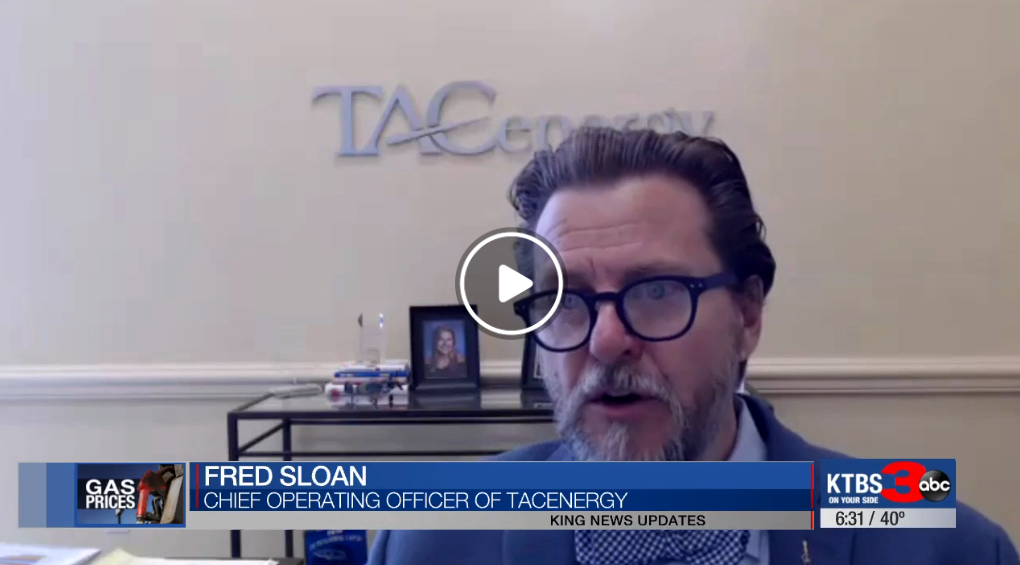TACenergy Grows Pacific Coast Presence with Addition of Southern California Sales Office

Native SoCal petroleum sales and supply chain management shores up presence
Dallas, Texas (September 1, 2017) – TACenergy, a division of The Arnold Companies, announces a new sales office in Southern California with the addition of Ammie Wert as regional sales manager.
Ammie joins TACenergy to open and facilitate the Southern California markets, adding to the existing West Coast sales team and focusing on new market opportunities. She joins Jeremiah Jones, Regional Sales Manager, bringing her experience in the industry and markets to strengthen the team and expand a TACenergy wholesale business.
Beginning her petroleum career over two decades ago in the lubricant division of a regional supplier, focusing on supply and logistics, Ammie developed a deep understanding of the petroleum, construction and transportation industries. While working as Fuel Supply Manager for one of the West Coast’s largest regional freight carriers, Ammie oversaw 1400 power units and four bulk terminals in three states. She continued to grow her career and experience in fuel distribution opening and operating a remote office for a wholesale distributor before joining TACenergy.
With her deep knowledge of the Southern California market, Ammie will leverage her petroleum sales and supply chain management to establish TACenergy position throughout the largest gasoline market in the country.
Fred Sloan, Vice President and Chief Operating Officer (COO) of TACenergy, said, “Ammie’s focused market efforts in Southern California, and as an addition to the West Coast regional team will leverage the past three years success in the West to strategically grow the presence of TACenergy. By supporting our existing customers and expanding within the market we will strengthen the service and continuity that goes along with TACenergy heritage.”
Latest Posts
Strategic Leadership Positions Bolster TACenergy Organic Growth Plans To Reach 3 Billion Gallons Annually
Expanding Opportunities Strengthens TACenergy Northeast Management Ranks
KTBS 3 Spotlight on TACenergy Leadership COO Fred Sloan - Sharing Thoughts on Changes in the Gas Market
TACenergy COO Fred Sloan Elected to SIGMA Board of Directors
Social Media
News & Views
View All
Strategic Leadership Positions Bolster TACenergy Organic Growth Plans To Reach 3 Billion Gallons Annually
Hazel Helm as Director of Supply and Randy Grizzle as Director, Sales & Marketing add depth to senior management team and support to key service areas
DALLAS (September 14, 2023) – TACenergy, one of the nation’s largest wholesale fuel sales companies headquartered in Dallas, Texas announced the appointment of two newly created positions supporting company growth plans to extend competitively priced product sales across the U.S.
As the Director of Sales & Marketing, Randy Grizzle brings over 25 years of U.S. fuel marketing experience leading sales development and data analytics for regional/national mid-stream energy companies. “The growth and high level of customer service TACenergy continues to bring to market reflects the activity of a very powerful team”, said Grizzle, “and I am excited to assist the company in achieving its highest potential.” Grizzle will put his focus toward continued business development opportunities, furthering current and future relationships with key national and regional companies in conjunction with developing processes and programs that enhance the foundation of company service levels.
Focusing on upstream supply relationships and contract development, Hazel Helm joins the company as Director of Supply and brings her 17-year multi-faceted strategic buying and analysis experience combined with a background from the refiner’s point of view to strengthen the national supply experience for TACenergy. Helm’s presence adds to existing business intelligence ensuring a well-managed national supply system with availability at over 800 U.S. terminals in the TACenergy network. Helm shared her outlook upon joining, “TACenergy is poised to lead the transformation of fuel distribution to include all energy resources and the vast long-term relationships with suppliers signifies its strength as the leader and I am excited to be a part of it.”
Fred Sloan, Chief Operating Officer of TACenergy shared, “The addition of Randy and Hazel comes at a time to support the growth trajectory we are experiencing and gives our team incremental depth extending our potential to reach new volume goals while continuing to lead the industry with the absolute best service levels in logistics and professional services.”
The TACenergy ‘Drive to 3 Billion’ goal is set to be achieved through organic growth and with the surety of our suppliers, carriers, and customers being treated with the respect and integrity that are the foundational tenets the company has maintained for nearly 60 years.
About TACenergy
TACenergy, a Dallas, Texas-based wholesale distributor of refined petroleum products is supported by 17 regional offices, one of the nation’s largest supply networks and over 100 employees across the 48 lower United States. Delivering customer value through customized fuel management programs, a 24/7 Supply & Logistics call center and a commitment to efficiency and accuracy, TACenergy exceeds industry standards to create sustainable growth. Annual volume exceeds two-and-a-half billion gallons for seven-and-a-half billion dollars in revenue. Ultimately, it’s the company associates and their passion for service that sets TACenergy apart.
Learn more about TACenergy, at www.tacenergy.com. Don’t Just Buy Fuel. Fuel Your Future.

Expanding Opportunities Strengthens TACenergy Northeast Management Ranks
Matthew Harrison Joins TACenergy In Its Brockton, Mass. Office As General Manager
BOSTON (November 1, 2022) – TACenergy, one of the nation’s largest wholesale fuel sales companies headquartered in Dallas, Texas announced the appointment and transition of Matthew Harrison to the role of General Manager for the company’s Northeast region. With the ongoing market changes and company growth across New England and the entire Northeast region, Harrison was hired to fortify the TACenergy position in the market, strengthen the team and look to the future, continuing to support suppliers and customers from Maine to New Jersey.
Taking on the leadership role for the Northeast region of TACenergy, Harrison brings over 15 years of industry sales experience in both the Northeast and Mid-Atlantic regions where he grew his career managing unbranded fuel sales and marketing for a leading terminal operator/distributor headquartered in the greater Boston area. “I look forward to joining a strong and well-established team and highly regarded group of fuel sales specialists at TACenergy”, said Harrison.
Fred Sloan, Chief Operating Officer of TACenergy shared, “The evolving growth and opportunities of the New England petroleum market have allowed us to expand the local regional leadership. With Matt’s proven industry experience coupled with the years of market knowledge of the current team, including Millie Platenik, Wayne Saven and Jay Reynolds, the TACenergy Northeast region will continue to set the standard for service and sales for existing and new customers.” Continuing their focus on New England markets, Platenik, Saven and Reynolds deliver the highest level of customer service to meet CEO, Greg Arnold’s vision for the company to provide the ‘best service and experience in the industry.’
Platenik confirmed, “I am excited to have Matthew join and take us to the next level. I can keep my focus on the New England customer base I have grown for the past couple of decades while Matthew will help us grow business throughout the entire Northeast and show our customers the true passion we have for the fuel business.”
Harrison will officially make his first appearance with the TACenergy leadership team next week as the new TACenergy Northeast General Manager at the Annual Fall Conference for SIGMA: America’s Leading Fuel Marketers national trade association.
About TACenergy
TACenergy, a Dallas, Texas-based wholesale distributor of refined petroleum products is supported by 14 regional offices, one of the nation’s largest supply networks and over 100 employees across the 48 lower United States. Delivering customer value through customized fuel management programs, a 24/7 Supply & Logistics call center and a commitment to efficiency and accuracy, TACenergy exceeds industry standards to create sustainable growth. Annual volume exceeds two-and-a-half billion gallons for seven-and-a-half billion dollars in revenue. Ultimately, it’s the company associates and their passion for service that sets TACenergy apart.
Learn more about TACenergy, at www.tacenergy.com. Don’t Just Buy Fuel. Fuel Your Future.

KTBS 3 Spotlight on TACenergy Leadership COO Fred Sloan - Sharing Thoughts on Changes in the Gas Market
Oil and Gas Prices Impacted by Tensions Oversees
Feb. 25, 2022
By JULIE PARR, KTBS TV
CLICK HERE to view read the original story on KTBS.com>
DALLAS, Texas - A Texas-based fuel supplier says gas prices will likely go up some more before they go down.
TAC Energy CEO Fred Sloan says crude oil prices have been going up over the past year. He says prices are about 35% higher than they were a year ago.
While the war in Ukraine has created some uncertainties in the energy market, Sloan says oil and gas supplies are not an issue for the U.S., and he doesn't believe gas prices will go up dramatically.
"The U.S. market is super elastic, and the U.S. crude supply is not at risk, refinery operations are not at risk, and the fuel that is at the gas station down the street will be there," said Sloan.
He says gas prices are expected to slightly increase in the spring and summer as usual, but as long as there's no major escalations in Europe, prices should slowly decrease of the course of the year.
"Now again, it will be volatile for a while, but the fact of the matter is there is no major supply demand influence that's going to cause prices in our region to get above where we are today," said Sloan.
Meanwhile, Sloan says the Ukraine invasion could have more of an impact on the global grain supply.
Russia and Ukraine together produce nearly a quarter of the world’s wheat.